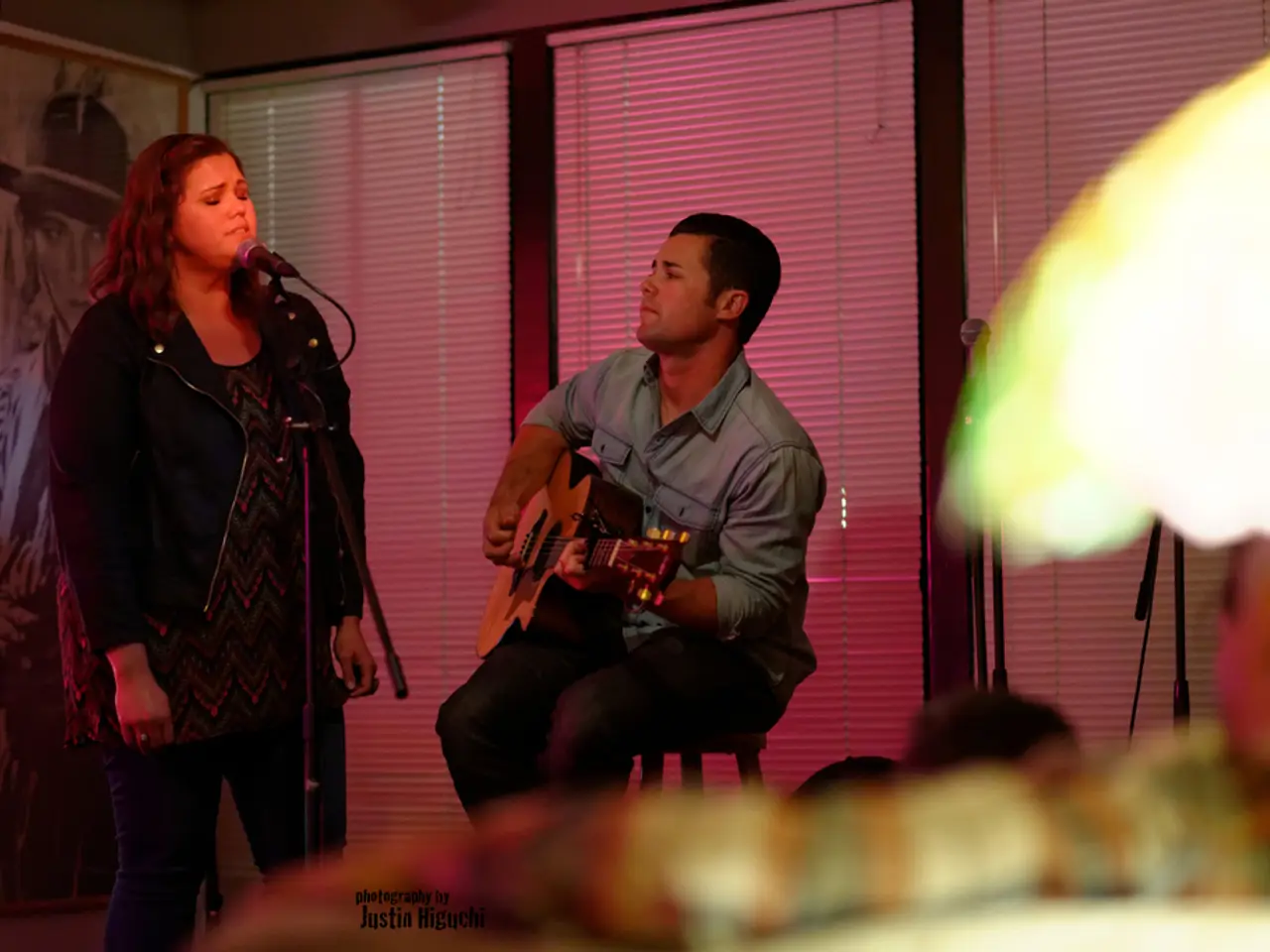Guide to Operating Your Music Production Studio
In the world of music production, having a well-equipped and optimised studio is essential for creating high-quality tracks. Here's a comprehensive guide on how to set up your home music production studio.
First and foremost, choose an appropriate room. Ideally, it should be around 10 x 12 feet or larger, with minimal noise and a room shape conducive to sound control. Acoustic treatment is crucial for maintaining a clean sound. Use bass traps in corners to reduce low-frequency buildup, acoustic foam panels on walls and ceiling at first reflection points to control echoes and reverberation, and diffusers to maintain liveliness without harsh reflections.
Next, gather your essential equipment. A reliable computer capable of running your chosen Digital Audio Workstation (DAW) software smoothly is the heart of your music production. Beginner-friendly brands like Focusrite or PreSonus are recommended for audio interfaces, which connect microphones and instruments to your computer with good sound quality. A good quality mic for recording vocals and instruments, studio monitors or headphones for accurate sound playback, and a MIDI controller for playing software instruments and creating beats are also essential items.
Setting up and optimising your workspace is crucial for productivity. Reduce clutter and distractions, set comfortable seating and proper lighting, and build project templates in your DAW with your preferred instruments and routing for quick starts. Sound isolation is also important, and monitor isolation pads can help reduce vibration transfer to the desk and floor.
The recording process involves preparing your environment and equipment before sessions, recording vocals or instruments in acoustically treated parts of the room, layering sounds, editing, mixing, and ultimately producing your music. Set small, manageable goals during sessions to maintain momentum and improve skills incrementally.
Connected together, all this equipment forms the backbone of your studio setup. In project and home studios, the lines between different stages of recording, overdubbing, mixing, and writing can blur. For instance, a new keyboard part was recorded via MIDI, and overdubbing additional guitar parts was done after the initial recording. Compression, EQ, and reverb were applied during the mixing process to improve the sound of the mix.
Diagrams can be useful for visualising the connection of equipment in a studio setup, while having a second computer monitor can be beneficial for collaborating with other artists and creating music for other media forms, such as film or video games. For example, using two screens can lead to a more fluid working experience when keeping the visual file on one screen and the music software on the other.
Remember, improving skills as a music producer is achieved through frequent practice and dedication. With the right setup and workflow, your home studio will foster skill development and a professional-level music-making process. So, get started today and let your music take flight!
- In your home music production studio, a well-equipped and optimized home studio is necessary for creating high-quality tracks.
- For acoustic treatment, use bass traps in corners, acoustic foam panels on walls and ceiling, and diffusers to control sound.
- Essential equipment includes a reliable computer, audio interfaces like Focusrite or PreSonus, a good quality mic for vocals, studio monitors or headphones, and a MIDI controller.
- Setting up your workspace productively involves reducing clutter, setting comfortable seating and lighting, and building project templates in your DAW.
- The recording process involves preparing the environment and equipment, recording vocals or instruments, layering sounds, editing, mixing, and ultimately producing music.
- Technology and entertainment merge in a home studio setup, where the lines between recording, overdubbing, mixing, and writing can blur, leading to collaboration opportunities and versatile music creation.




